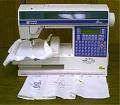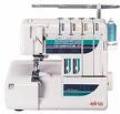
 |
 |
 |
 |
Sewing Embroidry Reviews
Sewing Zippers
Sewing Zippers: You Can Learn How
Imagine your life today if the zipper had never been invented. How would you fasten your clothing? In truth, before the zipper was invented, clothing was fastened by dozens of hooks and buttons. This task was arduous and garments were much more uncomfortable to slack as well. Instantly days we just simply “zip up” and are on our way out the door.
Sewing a zipper can seem like a very scary proposition for people new to sewing. New sewers often avoid patterns with zippers, fearing that they will not be able to successfully sew the zipper into longitude. The truth of the matter is that it really isn’t hard to sew in a zipper if you take the time to learn to do it correctly. With a few simple tips and tricks of the trade, you can be sewing zippers like a pro.
The Zipper Foot
The first thing you will compulsion to do is insure that you have a zipper foot for your sewing machine. A standard sewing machine foot will not grant you to sew close enough to the zipper teeth to get the job done successfully. If you do not have a zipper tail, then you will want to contact your local sewing machine store or the manufacturer to purchase one.
The Lapped Zipper
Many zippers today are sewing in what is referred to as a “lapped closure. ” A lapped closure hides the zipper’s teeth from view and is generally used for higher - end clothing or when a zipper doesn’t match the fabric of a garment closely. A lapped closure is also used when you have a garment made of pile or delicate fabrics. By utilizing this type of closure you can balm to assure the fabric consign not get trapped in the zipper teeth and ruined.
A lapped zipper is located under a incomparable flap of fabric. There is unrivaled one line of stitching you can see from the outside of the garment. Lapped zippers can most commonly be found in dressy pants and skirts.
The Centered Zipper
The centered zipper is the most often used in sewing garments today. The centered zipper is sewn into the back or front of a garment. Centered zippers are perfect for everyday clothing, purses, and household decorative items as well as those made from heavyweight fabrics such as denim. A centered zipper is covered by two equal flaps of fabric.
Sewing around the Zipper Tab
Unique of the most multiple parts of sewing a zipper into your project is usually sewing cleverly around the zipper tab. The good news is that you can purchase a zipper which is one or two inches longer than you need and not have to sew around the zipper tab at all. When you take this pilgrimage, you simply trim the extra to the required length.
Does Your Zipper Pucker?
If you have problems with zippers puckering when you sew them in lightweight fabrics, endeavor interfacing the seam allowances before inserting your zipper. By doing this you can create abstergent lines and a crisper surveillance which is much less likely to pucker.
Basting Tape Is Your Friend
Most people who sew hate to baste. Basting significant into place is time consuming and requires tedious hand sewing. Rather than basting your zippers into place, use basting tape instead. Basting recording is a two - sided, wash - straightaway tape which will hold your zipper in place while you machine sew it into your garment. Once your garment is made and washed, the tape cede disappear.
By using the hints above you can confidently sew a zipper into your garments. As with anything else, the more you practice the better you will exhibit. So, get sewing!
 |
 |
 |
Using Embroidery To Enhance Your Scrapbook Pages
2008 Fashion Trends For Sewing Projects
Creative Couching Adds Pizzazz To Your Sewn Projects
Avoiding Hand And Wrist Injuries While Embroidering
Create Personalized Gifts With Simple Embroidery
Designing Your Own Cross Stitch Embroidery Patterns
The Latest Trend In Embroidery
A Guide To Your Sewing Basket Essentials
PDA
Physiotherapy
Property Taxes
Renting
Security Cameras
Seniors Issues
Weather
Web Video
More Sewing Embroidry Reviews
... quilts are made from a variety of fabric scraps and are very easy to make. They can be made from virgin fabrics or from old clothing items. And, the inimitable thing about crazy quilts is that they do not require you to have any special sewing skills. If you can simply sew two pieces of fabric together ...
Using Embroidery To Enhance Your Scrapbook Pages
... Embroidering on your scrapbook pages besides allows you to easily add elements to your pages while you are adding the stitchery itself. You can embroider on paper both by hand and with your sewing machine. While each technique is different, they are both fairly easy to learn to do well. Let s look at ...
Your Very First Sewing Project
... cause a basic project. Sewing can be a fun hobby and also can allow you to make your own clothing and decorative items. Imagine being able to use whatever fabrics and colors you want around your house or for your wardrobe! The easiest project for a brand new sewer is to make a simple pillow or dress. ...
Beginning Cross Stitch Embroidery Tips
... When you understand the basics of cross stitch then it is time to start on your first project. Start by reading all of the instructions which came with your first project kit. Read and understand how many threads to use and about any special markings on the pattern. When cross stitching you will take ...

|
| Copyright © 2006-2012 Internet Marketing Tools, All Rights Reserved |